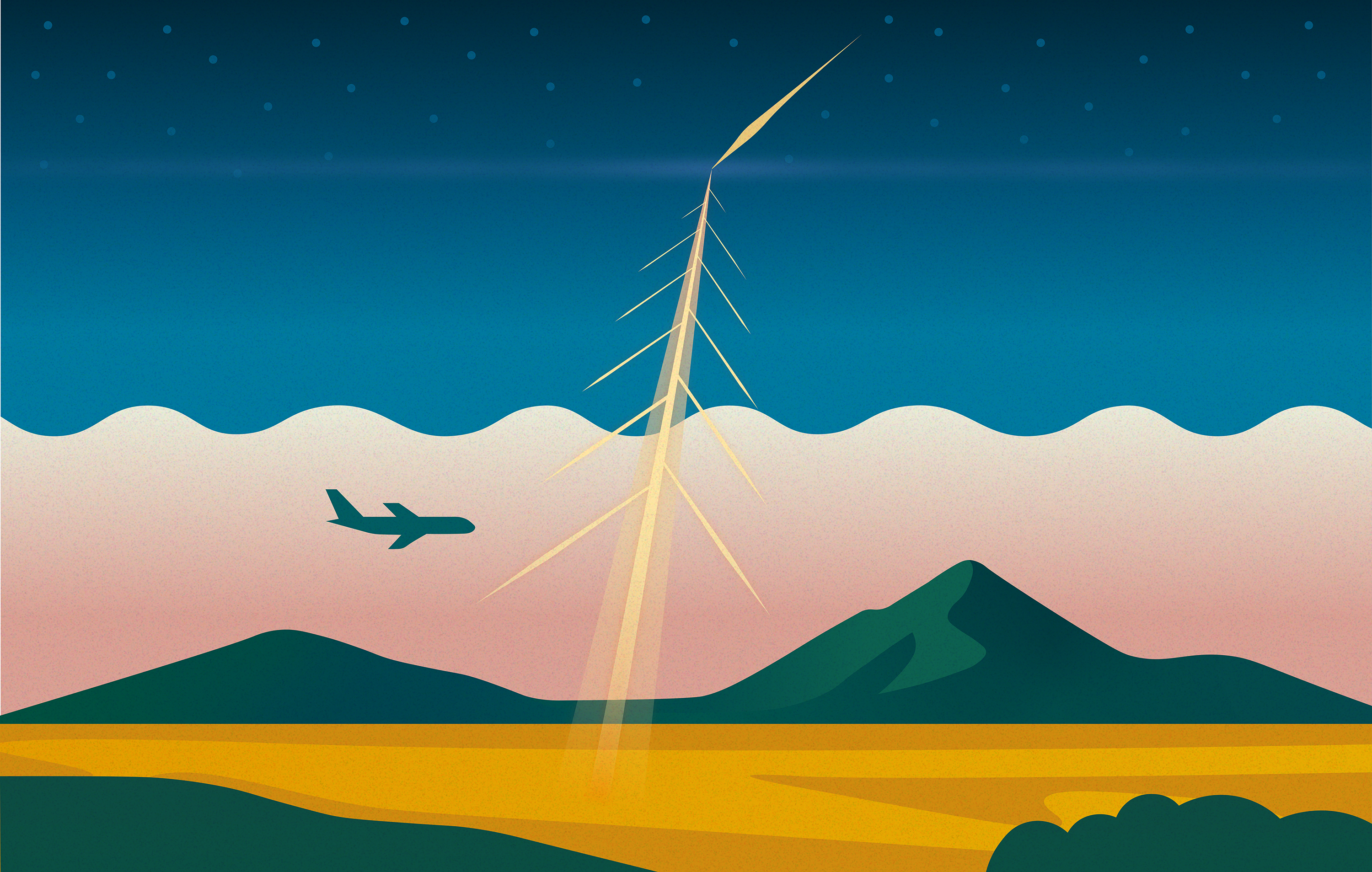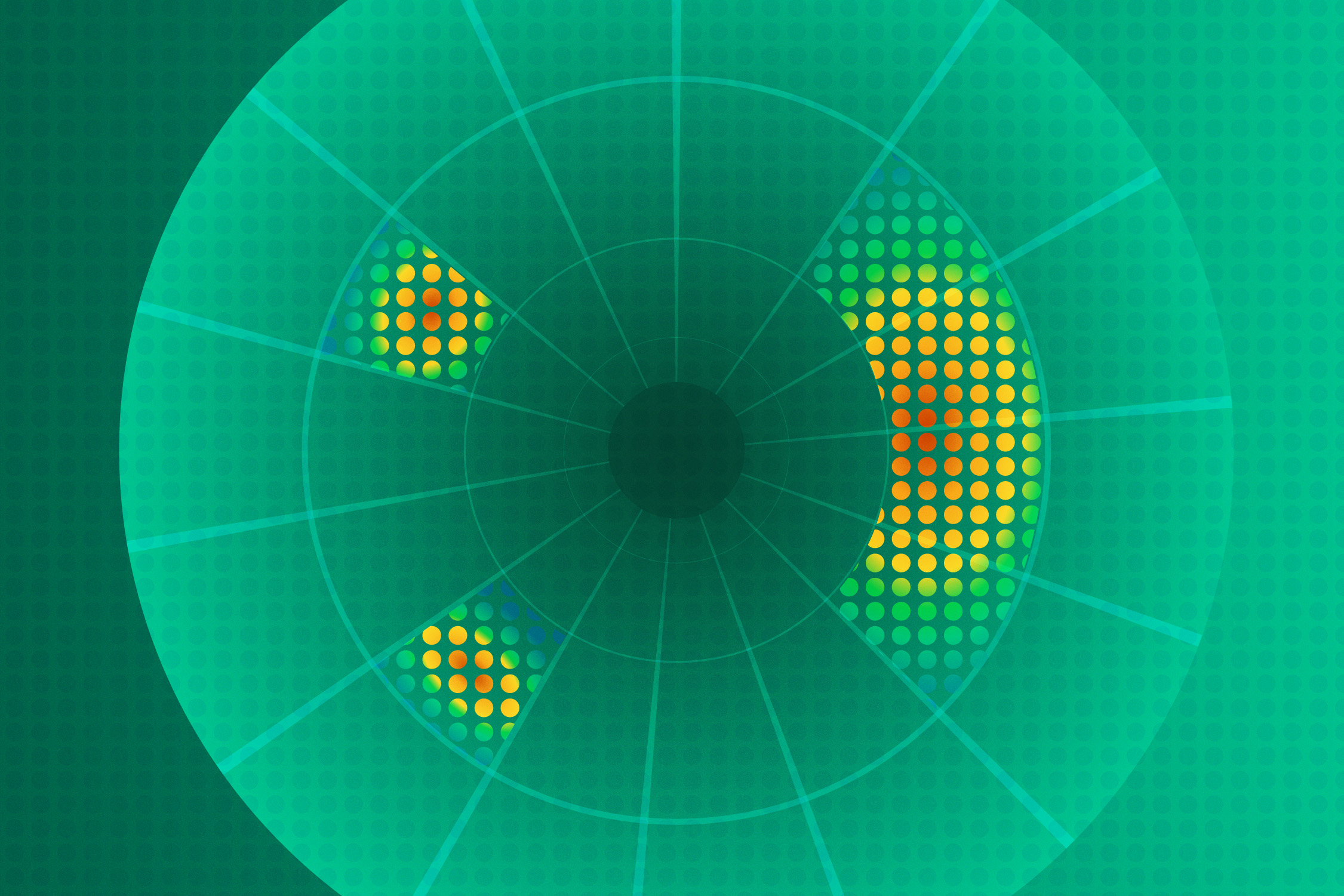Muon Mission in Tuscany
Can free particles from the sky save a priceless treasure in Florence?
- Diana Del Mauro

Sadness could have overwhelmed Los Alamos particle physicist Elena Guardincerri last summer when she saw the ever-expanding cracks threatening the dome of the Cathedral of Santa Maria del Fiore (better known as the Duomo), a Renaissance icon in Florence, Italy. Engineered by famed master builder Filippo Brunelleschi, it was completed in 1436, and the secrets of what hidden supports or unidentified vulnerabilities might lie behind its walls have been lost to the ages. But Guardincerri was in Florence on a mission to aid restoration: to meet with the president of the Opera del Duomo, the corporation that has managed the cathedral since its construction, and present an innovative imaging solution sourced from the cosmos with which to peer inside.

Though widely renowned for his skill at solving engineering problems, Brunelleschi was considered foolish by some for abandoning flying buttresses and other conventional supports in favor of his own unorthodox ideas for constructing the dome. He deliberately left no drawings behind, and his design still poses a few riddles: Does the double-shell dome have an inner support system of iron chains inside the masonry, as alluded to in historical documents? Is the inner wall made of rubble masonry as well as bricks? Such information is essential as architects and engineers enhance their models of the dome and decide how to protect this world treasure from further damage—or outright collapse.
Instead of metal detectors, x-rays, or ultrasonic inspection, Guardincerri’s team will use cosmic-ray muon trackers to create vivid images of hidden reinforcement elements inside the dome’s masonry and examine the cracks deep inside the dome’s 2.25-meter-thick inner wall. The award-winning technology pairs detectors with high-tech software to construct images from high-energy particles called muons created in collisions between cosmic rays from space and molecules in the earth’s upper atmosphere. Most of the time, these muons rain down on us, pass through our bodies, and penetrate deep into the earth unnoticed. And from them, preservationists will get 3D-like images of the structural details they have sought for decades. The images will help them understand, for example, what keeps the 37,000-ton dome from toppling any time there’s earthquake activity.
After Guardincerri presented the results of her team’s feasibility study and obtained approval to build customized muon trackers for the dome, the Italian native entered the majestic Florence cathedral for the first time in her life. Architects showed her where she will eventually begin the search for iron reinforcements that other methods have failed to locate.
“This will be a great stage to show the world how well muon imaging works,” she said.
Muon-imaging technology was originally invented in the 1950s. At that time, it didn’t track muon scattering, but rather muon transmission and attenuation through objects. Archaeologists have exploited this method to search for hidden chambers inside the Egyptian pyramids. Los Alamos later invented the muon multiple-scattering technique, and following the September 11, 2001, terrorist attacks, its threat reduction team and commercial partner Decision Sciences Corporation developed muon-scattering tomography to expose smuggled nuclear material in ship cargo containers, vehicles, and rail cars—even when the material is shielded from conventional screening systems, such as x-rays. The Lab has found its muon-scattering tomography to be effective for arms treaty verification and nuclear reactor imaging as well, with Japan planning to use the technology to peek inside its tsunami-ravaged Fukushima Daiichi nuclear reactor.
In Florence, however, the Lab’s existing muon trackers won’t do because they weigh 800 pounds each, and it seems wise to presume that the dome shouldn’t be subjected to that much additional weight. So the Los Alamos physicists and their collaborators are creating lightweight muon trackers that can be shipped to Italy, disassembled for transport up spiral staircases and through narrow passageways, and reassembled in different locations for measurements.
One muon tracker will be suspended inside the cathedral near Giorgio Vasari’s Last Judgment fresco; another will be placed between the dome’s two shells, in a walkway closed to the public. With the structure flanked on both sides by detectors, the team can collect multiple scattering angles from the muons striking denser objects hidden inside the overall structure; these scattering events are used to create a computer image. To obtain sufficient resolution, Guardincerri’s team must measure the muons entering and exiting the structure for at least two weeks.
While making a critical contribution to stabilizing and preserving the Florence cathedral, the Los Alamos team will unveil the first application of muon tomography to infrastructure monitoring. Once miniaturized, the muon trackers could become inspection tools for imaging thick archaeological artifacts, assessing the structural stability of dams and bridges, diagnosing damage in pipes, and generally seeing through all manner of hard-to-access structures and systems of value to civilization.
People Also Ask
What is a muon?
A muon is a fundamental subatomic particle, meaning it is not comprised of other, smaller particles. Muons are produced when cosmic rays from the Sun collide with particles in the atmosphere. They are harmless to humans and continually rain down on Earth's surface at a rate of roughly 10,000 per square meter per minute.








